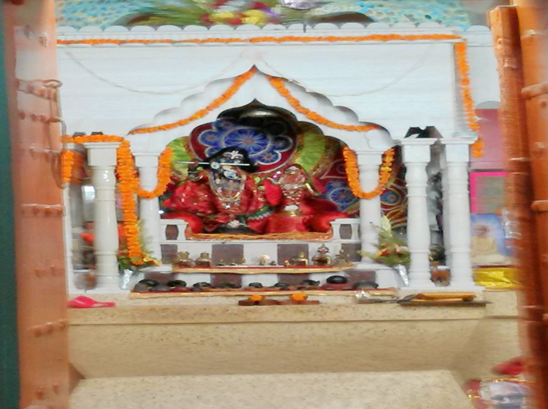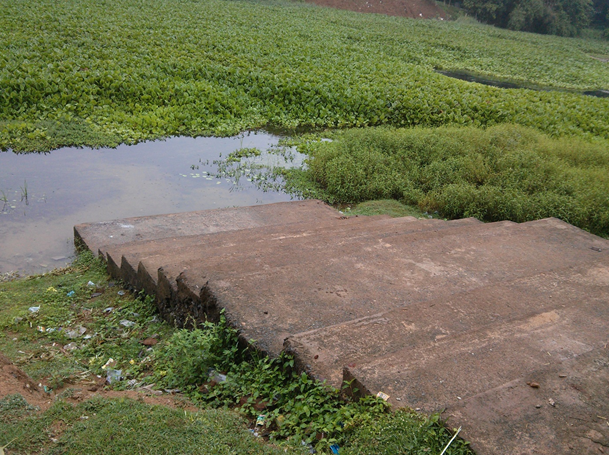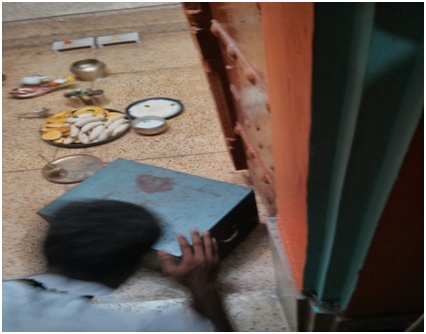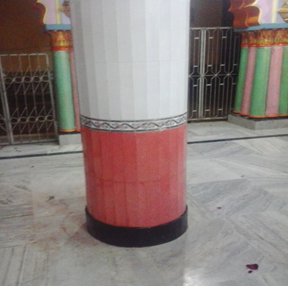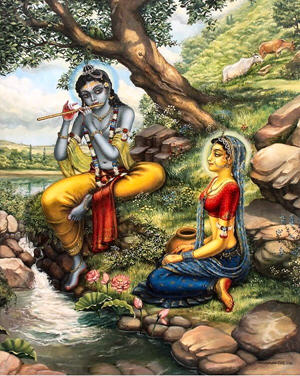Nrusinghanath Temple – Bargarh
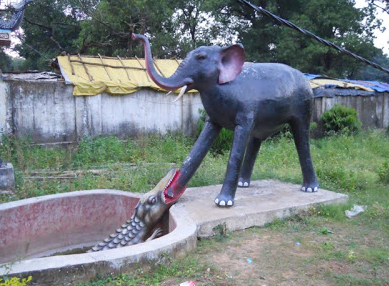
The Story of cat form of the Lord Marjara Kesari at Nrusinghnath
http://www.gopaljiu.org/phocadownload/bindu201.pdf
In the Bargarh district of extreme western Orissa is the ancient temple of Lord Nrusinghnath, also known as Bidala Nrusingha, Marjara Kesari, and Marjara Nrusingha. (In Oriya language, bidala and marjara mean “cat”, and kesari means “lion”. Also, Orissans pronounce “Narsimha” with a distinct “u” sound, hence the different spelling). Situated about 300 kilometers from the famous temple of Lord Jagannath in Puri, the Nrusinghnath temple is on top of the famous Gandhamadan hill, where ancient rishis are said to have come to meditate. Some literatures say that gigantic Gandhamardan hill was originally in the Himalayas, but a piece of it fell down in this place when Hanuman was carrying it to Lanka with the herbs required to heal Lakshman.
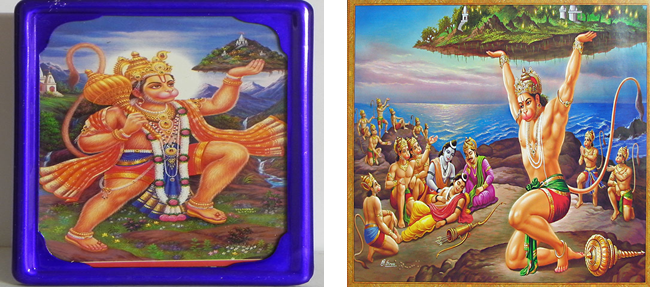
Gandhamadan Hill is also said to be one of the places where the Pandavas visited during their exile. The local tradition about this deity was compiled in the middle of the 18th century by the poet Yuga Das Kondh in his Nrsimha-carita.
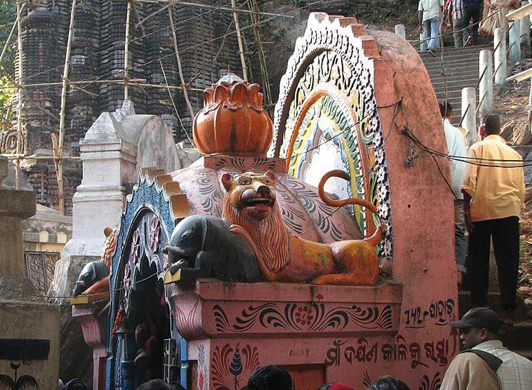
It is said that in Treta-yuga, there was a rishi named Udanga who was performing austerities on the bank of the Godavari river. He had an attractive young daughter named Malati. One day, Ravan happened to visitand saw the beauty of the young girl. Ravan raped her and threw her into the Godavari River. The Godavari took compassion on her and brought her to the shore. When Malati came to her senses, she began searching for her father and crying. Indura, the mouse carrier of Ganesh, heard her cries and offered to help her reach her parents if she would agree to enjoy with him. From Ravan and Indura, a demon was born named Mushika Daitya (literally, “mouse demon”).
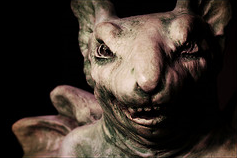
The new-born baby was so ferocious that as soon as he came from the womb he immediately devoured his mother. Then he began to perform austerities to please Lord Shiva. Shiva was pleased with him and gave him the boon that he would have no cause of fear from anyone except for Lord Nrisinghadev from Satya-yuga.
Seeing his power, the devas became frightened and appealed to Lord Ramachandra to rescue the universe. Accordingly, Lord Ramachandra manifested the form of Nrisinghadev to catch the demon. Mushika Daitya became fearful and ran from place to place seeking shelter, until finally he appealed to Gandhamadan Hill. The personified Gandhamadan granted shelter to Mushika Daitya, who then entered within a crack in the hill. When Lord Ramachandra later arrived, Gandhamadan requested him not to enter inside the hill to seek out the demon. Lord Ramachandra then assumed the form of Marjara-Keshari, with the head of a cat and the body of a lion, and began guarding the area by the sudanga, or inner door of Gandhamadan. Just as a cat sits quietly by a hole, waiting for a mouse, similarly, Lord Marjara Kesari is still sitting and waiting for the demon Mushika to come out.
Thousands of years later, in Kali Yuga, there was a tribal man named Hari Kondh and his wife Yamuna living near the Gandhamadan Hill. They used to go out every day to collect roots, which they would sell to maintain themselves. One day,Yamuna was digging for roots when she saw blood coming from the ground. She became frightened and ran to tell her husband, when the couple came back to the spot they found milk pouring out. Then they heard a voice, “I am pleased with you. I am Narayan in my cat-lion form, waiting to kill the demon Mushika. Take me from the ground here and have a temple built to protect me.”
They dug in that place and unearthed the deity, and they informed the Chauhan king Baijal Dev, who built a temple for the deity in the 15th century. Since then, the descendents of Hari Kondh are said to have carried on the worship of Lord Nrusinghnath.
There are many interesting and unusual features to this temple. Without anything else to offer the Lord, Hari Kondh and Yamuna are said to have given local wild oranges to Bidala Nrusingha. To this day these fruits are offered to the Lord and are considered as sacred as water from the Ganga. Nrusinghnath is considered to be sacred for both Vaishnavas as well as the followers of Lord Shiva. On the southern side of the hill is a deity of Shiva named Hari Shankar, who is considered to be an incarnation of Lakshman. There are also deities of Shiva named Gupteswar and Jala Mahadeva on the tops of two nearby hills. The Nrsimha Carita describes that Bidala Nrusingha has the goddess Chandi on his chest, Somlai on his back [Somlai is a deity of Shakti worshiped in western Orissa], and 64 yoginis in each one of his hairs.
Other details – Sri Nrusinghanath, the great temple of Orissa in India, is situated at the foot hills of Gandhamardhan Hill in Bargarh. The King of Patnagarh, Baijal Singh Dev laid foundation of this historic temple in 1313 A.D. It is only 45 feet in height, divided into two parts: the first being the seat of the Lord Nrusinghnath, the second alloted to Jagamohan (anti-chamber having 3 gates and each supported by 4 pillars).
Lord Nrushinghanath is a much-adored deity of Orissa and a great fair is held in his honour on the 14th day of bright fortnight in the month of Vaisakha.
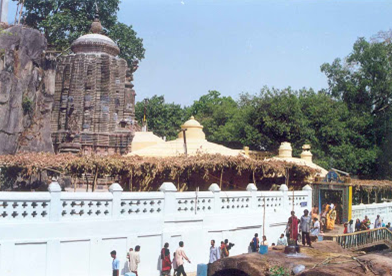

The Vidala-Nrusimha temple stands amidst the verdant beauty of the picturesque Gandhamardan hills. Nrusinghanath is a popular and attractive pilgrim point. Coupled with a series of beautiful waterfalls and some sculptures, its location offers an air of serenity and visual delight, making the trip worthwhile. The present temple, located at the source of the Papaharini stream.
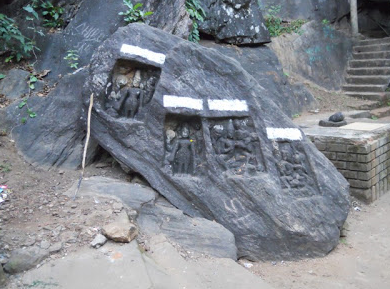
Site of the temple is unique. Stone steps wind up the hillside behind the temple, leading past a waterfall, and eventually curving under the falls to a spot where some beautiful, and very wellpreserved relief sculptures are found.

The climb up and down journey to the carvings will take about an hour. Since shoes are not permitted on these sanctified pilgrimage steps, those with tender feet should take along a pair of heavy socks for the climb. On the opposite slope of the hill on which the temple is located, is the Harishankar temple. Between the two temples there is a 16 km plateau, littered with Buddhist ruins that scholars feel may be the remains of the ancient university of Parimalagiri.

In temple complex you can see Chaldhar (waterfall), Bhimdhar (waterfall), 9th and 11th century god and goddess sculptures. A 16km stone step going towards Harishankar temple, in the way you can visit Sitakunda, Panchu Pandav caves, Kapildhar (waterfall), Suptadhar (waterfall), Satyaamb, Bhim Madua, Happy Point (top hill).
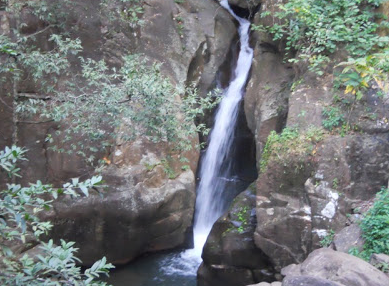
There is also an excellent garden named Hanuman Vatika just near the temple. A small market is placed where you can buy toys, bangles, some local gifts and religious items. You can take prasad just outside temple main gate (Singha Dwara or Lion Gate)
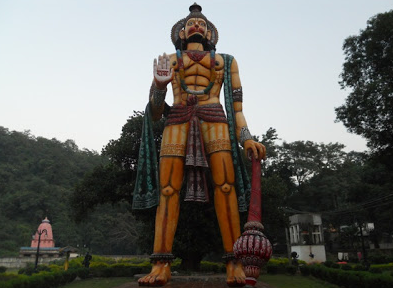
A huge number of monkeys are inside temple complex, so beware to them for your cameras, food items, prasad etc., You also can get accomodation in temple complex.

You can also get free prasad (Harihar Pangat) at 12 pm inside temple complex. Temple remains open from 4 am to 12 pm and then 2 pm to 6 pm.
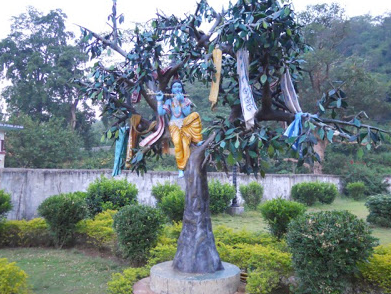
How to reach: From Balangir, take road towards Padampur. Then on Padampur, left turn towards Paikamal (25kms). On Paikamal take left turn towards Nrusinghanath Temple Rd (3kms).
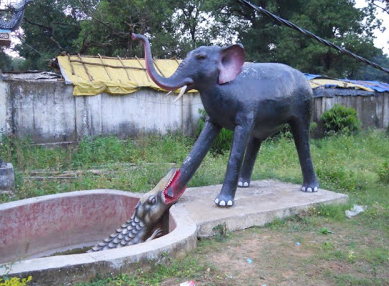
The famous 15th century temple, Nurshinghanath is 164kms from Sambalpur. It is about 110 km west of Baragarh and 64 km from Sambalpur via Baragarh.
Nrusimhanath is famous for the Vidala Nrusimhanath temple and waterfalls.
It is about 32 km south-west of Padampur and 3 km from Paikmal. Khariar Road Railway Station is a railhead under the administrative control of South Eastern Railways. The station is located in the heart of the town.
Samta Express, Visakhapatnam-Raipur Passenger, Raipur-Khariar Road Passenger, Puri-Ahmedabad Express, Puri-Adi Express, Visakhapatnam-Durg Passenger and Kesinga-Khariar Road Passenger are the prominent running trains.
Computerized passenger reservation service offered. Contact: Sanatan Nayak (Tourist Officer) Phone : 0663-2411118 Mobile : 9437358226
